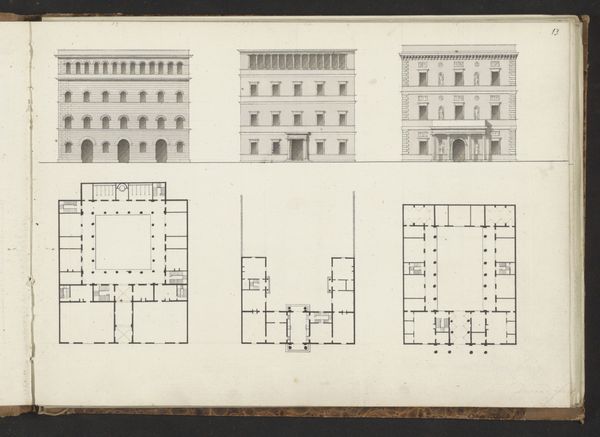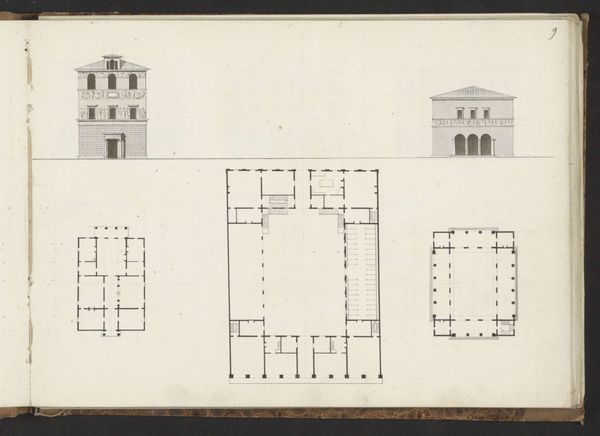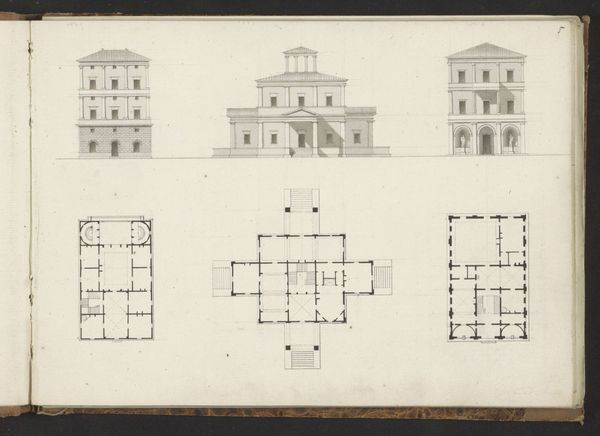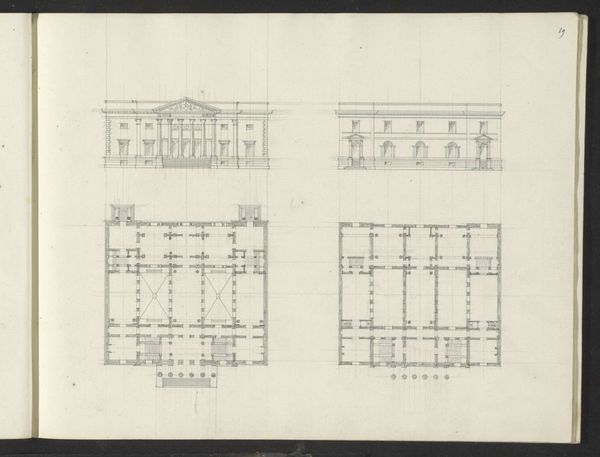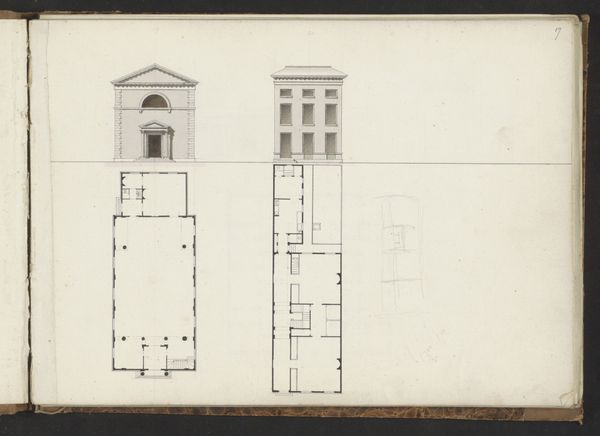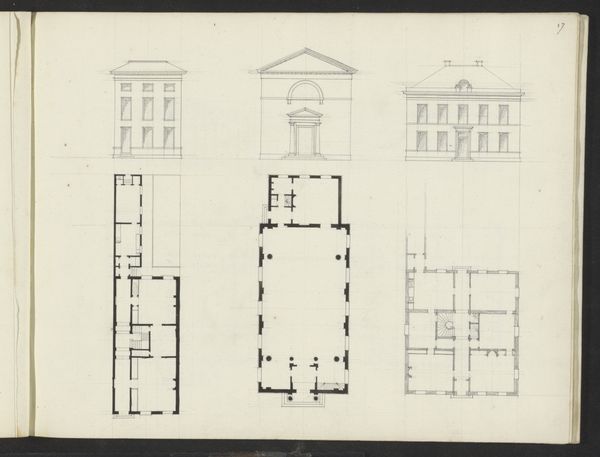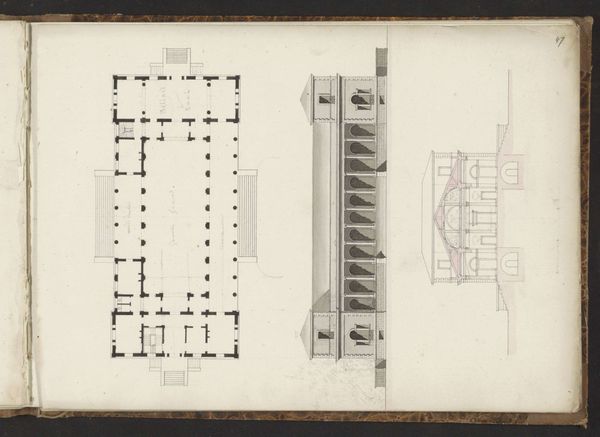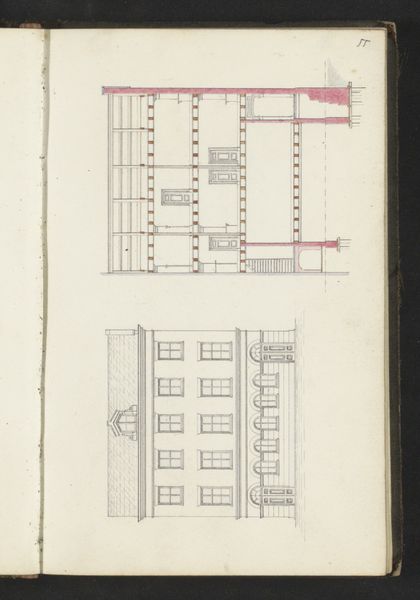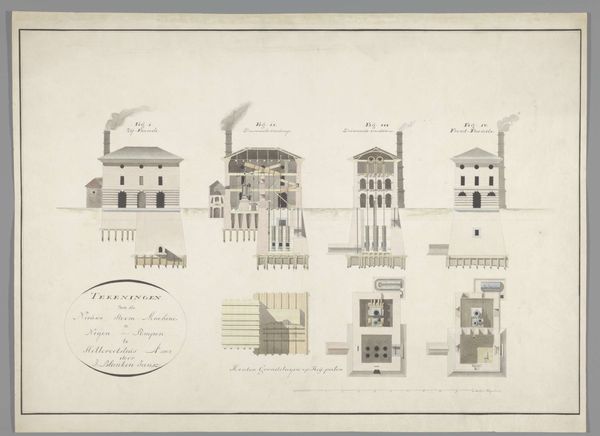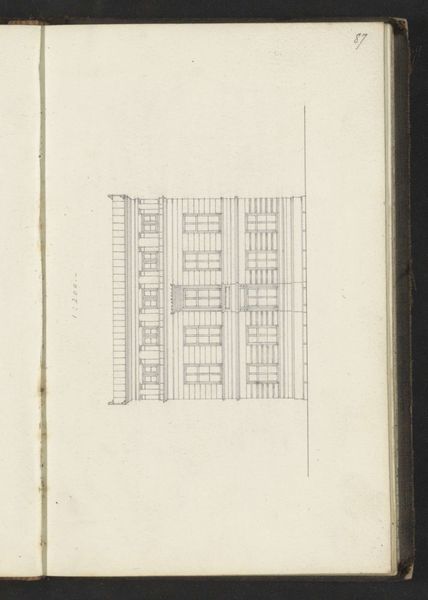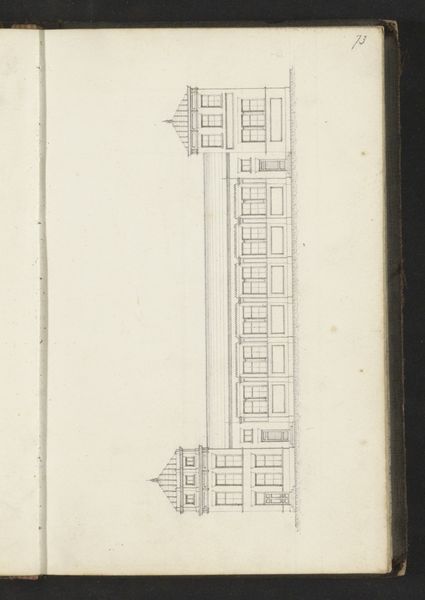
drawing, paper, architecture
#
drawing
#
paper
#
geometric
#
line
#
cityscape
#
architecture
#
building
Copyright: Rijks Museum: Open Domain
Curator: At first glance, this drawing feels almost mathematical in its precision, but undeniably elegant. Editor: I see rigidity, actually—these stark lines and the repetition. There’s something about architectural drawings from this era that always feels to me like a longing for control, a way of imposing order. Curator: That's an interesting entry point, but there's a beauty here too, in the geometry, wouldn't you agree? The artwork we are looking at is entitled "Plattegronden en voorgevels van drie villa's", by Willem Springer Jr. Its date ranges from 1825 to 1907 and rendered on paper. The precise linework offers architectural studies— elevations paired with floorplans—of three distinct villa designs. Editor: A yearning for structure, you might say. I see these drawings, particularly the floorplans, as diagrams of power and social stratification. The clear separation of spaces within suggests a rigid societal structure, defining who moves where, who has access to what. It’s fascinating to consider the gendered dimensions here as well, and the separation of private versus public space within these home designs. Curator: Yes, these separations evoke both a time and place, but what are the timeless aspects? Perhaps we are hardwired to search for similar things, no matter what era—safe havens, shelter, control. Looking at the geometric figures as an iconographer, I believe there is some cultural information buried within them as the shape of a house offers the primordial meaning of safety and family. The symbolism is rooted in shared history, and transcends culture as a place of the basic needs for survival. Editor: The drawing style, while seemingly detached, has inherent biases embedded. The act of designing space always means promoting some interactions and impeding others. The aesthetic here creates barriers, visible in these facades and room layouts, solidifying privilege and control. Curator: Thinking of modern architects, and what makes them successful, perhaps it all dates back to understanding what the drawings represent. These drawings present us the possibility to contemplate a place for living and, more importantly, feeling. That can only occur with a deep understanding of iconology. Editor: Exactly. By understanding what it reflects in terms of politics and philosophy, the image offers insights. In this case, into a historical mindset still felt today. Curator: Beautifully put. It makes me look at the whole composition differently now. Editor: Indeed, seeing is always about more than just the image.
Comments
No comments
Be the first to comment and join the conversation on the ultimate creative platform.
